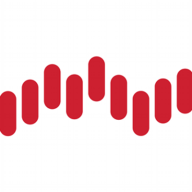

Find out what your peers are saying about Microsoft, Amazon Web Services (AWS), Akamai and others in Infrastructure as a Service Clouds (IaaS).
| Product | Market Share (%) |
|---|---|
| SAP HANA Enterprise Cloud | 1.4% |
| Virtustream xStream | 0.2% |
| Other | 98.4% |

| Company Size | Count |
|---|---|
| Small Business | 7 |
| Midsize Enterprise | 4 |
| Large Enterprise | 16 |
SAP HANA Enterprise Cloud is a fully scalable and secure private managed cloud solution. It empowers organizations to unlock the full value of SAP HANA in the cloud - accelerating growth and innovation, driving IT and business transformation, quickly delivering business outcomes, and reducing risk.
We monitor all Infrastructure as a Service Clouds (IaaS) reviews to prevent fraudulent reviews and keep review quality high. We do not post reviews by company employees or direct competitors. We validate each review for authenticity via cross-reference with LinkedIn, and personal follow-up with the reviewer when necessary.